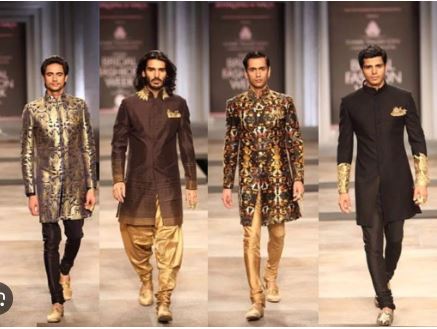Unleashing Innovation: Strategies for success in India's crowded fashion space

07 December 2023, Mumbai
India's fashion arena is on fire, and here's the breakdown: The Economic Times forecasts that by 2028, a whopping 55 per cent of India's consumer base will be the youth – the crown jewel for the fashion industry. But, here’s the twist – Indian fashion brands are grappling with the challenge of winning over these discerning young consumers.
Rising incomes, a frenzy for Western trends, the e-commerce explosion, and a hunger for aspirational purchases have catapulted India into the global fashion limelight. It's not just a sourcing hub anymore; it's a beacon for fashion-forward consumers.
Data-point
As per The Financial Express, India's apparel market is a colossal $92 billion, notching up 7 per cent annual growth over the past decade. As per industry projections this colossal figure could double to $180 billion by 2030. Indeed, the fashion game in India isn't merely evolving; it's exploding.
Challenging competition, supply chains and skill gap
India's fashion battleground is teeming with both domestic and international heavyweights, cranking up competition to cutthroat levels. Thanks to globalization and the e-commerce frenzy, consumers have numerous choices, forcing brands to distinguish themselves through their uniqueness. To dominate the market, domestic labels must focus on quality, elevate customer experiences, and inject innovation into their DNA.
Of course, the lockdown was a stark wake-up call for India's fashion sector, revealing glaring vulnerabilities in the supply chain. From sourcing raw materials to navigating manufacturing and logistics challenges amidst lockdowns and travel restrictions, brands must fortify their supply chains with resilience and agility to weather future uncertainties.
Untold story
Beyond the glitz, the industry is grappling with a glaring workforce skills gap.
Many fashion graduates lack the real-world expertise demanded by this unforgiving market. And to move forward, brands must invest strategically in talent development, foster mentorship programs, and forge robust collaborations with educational institutions.
It's time to sharpen the industry's competitive edge, ensuring it's not just surviving but thriving in a landscape that demands adaptability and skill mastery.
E-commerce, overseas markets high-growth potentials
To surpass the growing presence of global high-street brands venturing beyond India's Tier I cities, domestic labels can leverage the country's flourishing e-commerce landscape. The projected CAGR of 20 per cent, reaching approximately $99 billion by the end of 2024, offers Indian brands the opportunity for extensive outreach.
Many fashion brands have already made significant strides in exporting, catering not only to the fashion needs of the Indian diaspora but also a broader international consumer base. The allure lies in quality, craftsmanship, and diverse patterns and techniques that characterize Indian fashion.
Sustainability is no longer a choice; With rising emphasis on sustainable and ethical fashion, it becomes imperative for brands to prioritize quality, design, and innovation, aligning themselves with international standards and regulations.
In response to both global regulations and consumer preferences for sustainable lifestyles, Indian brands are actively investing in sustainability initiatives. This marks a strategic move towards meeting governmental regulations while embracing environmentally conscious practices
Athleisure, women’s and kid’s wear big-ticket items
As per Statista, the global market research firm, the athleisure sub-segment in the fashion industry is poised to reach nearly $5 billion by 2024 in India. Footwear is identified as the dominant component within the athleisure category.
Moreover, rapid growth is expected in two other sub-segments: women's wear and kid’s wear. A recent Wazir Advisors report underscores children's wear segment, projecting a robust Compound Annual Growth Rate (CAGR) of 13 per cent until 2024-25.
Indeed, the Indian fashion sector is undergoing notable shifts, both domestically and internationally. Brands are strategically positioning themselves to leverage diverse growth opportunities, showcasing a proactive approach in navigating the evolving market dynamics.
Latest Publications

































